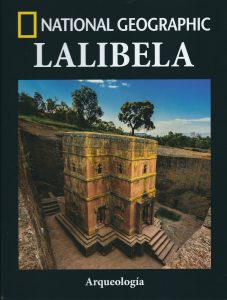
The Timkät festival, Timkat or Timket, is one of the most famous celebrations in Ethiopia and Eritrea. It takes place on the 11th day of the month of Terr, which usually corresponds to our January 19, although due to the peculiarity of the Ethiopian calendar, in leap years it would coincide with January 20. It commemorates the baptism of Christ in the Jordan River by Saint John the Baptist, an event celebrated throughout Christendom, but of special importance in Ethiopian tradition.
During Timkat, family and friends take the opportunity to gather and feast on the meat of animals sacrificed for the occasion, typically sheep, chickens, and oxen. Additionally, large quantities of tej, beer (tella), and homemade spirits are consumed.
The festival itself spans three days. At sunset on the first day, known as Kätära, the tabot – a replica of the Ark of the Covenant, which is the heart of any Ethiopian temple – is taken from its church to be carried to the nearest stream or pond. The tabot is escorted by various clergy dressed in vibrant colors and protected by parasols, accompanied by numerous faithful who wish to participate in the beautiful procession.

Once at the Epiphany pond, the tabot is set up in a tent along one of its shores, where it will spend the entire night. It won’t be alone, as many faithful remain at the location, keeping vigil while lighting torches and singing hymns and songs. In some cases, such as at the Janhoy Meda pond in Addis Ababa, there may be several tabots in the same place, originating from different churches. The attending audience usually brings food and drinks to give to the priests, who are highly respected throughout the country.
At dawn on the day of Epiphany, the priests proceed to recite the prayers of blessing for the water in the pond, with which they then begin to sprinkle attendees with basins or even with spray. The act symbolizes the renewal of the sacred bond of baptism, or in other words, the confirmation of the believer’s faith.
Once the ritual is complete, all the tabotat return in procession to their temples, except for one, which will remain in the same place for another night. Again, the festive atmosphere, psalms, and songs will enliven the evening.
The third and final day of the celebration is dedicated to Saint Michael, a highly venerated saint in Ethiopia and Eritrea for his role as the conqueror of the Devil. At the end of the morning, the tabot’s tent is dismantled, and the sacred object is returned to its temple, always with the customary procession.

Where to see it
Although it is celebrated in practically the entire region with a majority Orthodox Christian population in the country (Tigray, Amhara, and part of Oromia), perhaps the most well-known place where Timkat is celebrated is the Bath of Fasiledes, a beautiful pavilion located in the middle of a rectangular pond in the city of Gondar. The Timkat celebrations in Lalibela and Addis Ababa are also very famous.
To learn more
Excellent video by National Geographic showcasing the Timkat festival.
DO NOT PLAGIARIZE. Writing on this blog involves significant effort for which I only ask for recognition. If you wish to cite this article, you can use this formula:
LOZANO ALONSO, Mario. «Timkat, la epifanía etíope«. In Reino de Aksum (blog). Published: 05/01/2024.

About the autor: Mario Lozano Alonso is a Spanish Historian especialised in Ethiopian History. Reino de Aksum is his blog about this topic.




 https://orcid.org/0000-0003-2855-3195
https://orcid.org/0000-0003-2855-3195
Deja una respuesta